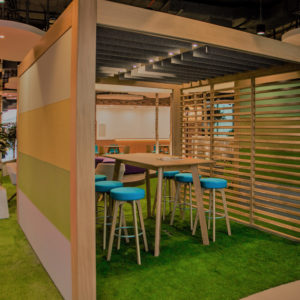Combatting distraction in the open plan office
 Offices across the world have embraced the open plan office with approx 70 percent of US offices now open plan office space, according to studies. But new research indicates that open plan offices can actually decrease employee productivity, health and happiness.
Offices across the world have embraced the open plan office with approx 70 percent of US offices now open plan office space, according to studies. But new research indicates that open plan offices can actually decrease employee productivity, health and happiness.
We take a look at the development and direction of interior workplace designers addressing these challenges.
A recent study by Harvard Business School suggests that open-plan offices actually lead to a 72 percent drop in face-to-face interaction between employees, with more email use and less productivity. According to another piece of research, conducted by Ipsos and Steelcase’s WorkSpace Futures team, office workers are losing a total of 86 minutes, on average, every day to distractions.
So what can we do?
By using effective and thoughtful design, the majority of open offices can be adapted to create a flexible, attractive and more productive environment without the need for a complete redesign.
- Create comfortable and versatile breakout spaces, with sofas and coffee tables, for checking emails, taking a break and socialising. This creates a clear divide between both work time and recreational time to relieve stress.
- Encourage employees to leave their desks by providing a variety of areas for different tasks and interactions, designing your space to encourage ‘collisions’ between colleagues. This encourages effective co-working and collaboration.
- Provide private or partially private spaces for meetings away from the desks, such as internal meeting pods or internal rooms within the space.
- Use screens and high-backed furniture such as booths, to provide spaces with visual and acoustic privacy for focused work, meetings and phone calls, as workers may not wish to share certain matters with the whole office.
- Collaboration tables allow co-workers to spread their workload by using the expertise of fellow employees, removing some of the potential stress and distraction, as well as working together to create a better standard of work.
Written by Lucy Hardwick, Marketing Director

